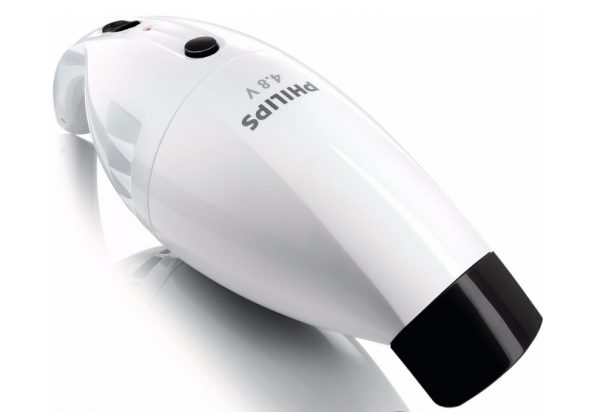No One Meaner Than A Vacuum Cleaner
You might think that nothing could prepare a designer to create a 15’vacuum cleaner that explodes on stage while being worn by an opera singer, but actually, you’d be wrong. Vinilla (aka “Vin”) Burnham, costume designer for Terry Jones’s new opera, Evil Machines, gained useful prior experience as part of the team that created Mr. Creosote, the character in The Meaning of Life who succumbs to the temptation of a “wafer-thin mint” and explodes very messily.
The opera features wild cars and other evil machines, pitted against friendly household appliances, including a beautiful egg whisk and the alarm clock that loves her. Veteran costume designer and Monty Python movie alum James Acheson had a hand in designing the opening chorus of six evil vacuum cleaners. The chorus is joined by a 15′ giant evil vacuum cleaner, who – with the help of an inflatable body, a fan, and some CO [subscript]2 – literally bursts with pride, showering dust and bed bugs over the orchestra and the first few rows of the audience.
Burnham, a veteran costume effects designer on such films as The Fifth Element, Labyrinth, and Tim Burton’s Batman movies, is quite comfortable working on 3D costumes. “I am known for being a special effects costume designer because I came to it through creatures and puppets,” she says, “and when I started my career way back at the Royal Opera House, I was in props.”
One of the biggest hurdles to overcome on this project was making the costumes wearable enough for a performing singer. “If Evil Machines had been a movie, the costumes would have been worn by stunt men or dancers,” Burnham says. To accommodate opera singers, however, they couldn’t constrain the neck and chest area or be too heavy. None of the costumes exceeds 15lbs: the gas pump and telephone suits clock in at just under 14lbs, and the motorbikes are around 9lbs. Most of the weight is taken by a very basic harness that straps on like a backpack, and the costumes all have back zips or Velcro, and can be stepped into or lifted up over the performers’ heads.

Burnham had previously worked on the animals for a Gerald Scarfe-designed production of The Magic Flute at LA Opera but obviously was unable to sit down for a chat with Mozart. On this production, however, she and composer Luis Tinoco worked together on quick changes and timing to allow the performers the mobility to negotiate some steep ramps on the stage of Lisbon’s Sao Luis Theatre. She says, “The timing was crucial.”
Burnham initially wanted to sculpt the costumes, but because of time and budget constraints, she had to fabricate them from polyethylene foam. Her main concern was to avoid a doughy, “preschool” look. “I thought people would feel shortchanged if they didn’t see anything evil, so I wanted them to have a hard edge,” the designer says. “I didn’t want them to be cute and cuddly.” She chose FB-FX in London, the model makers who created the armor for Gladiator, for their masculine atmosphere. “In their workshop, they always have chassis and engines lying around, and they love breaking them up,” she says.
See more: What’s the best vacuum cleaner?
Once the costumes were fabricated, they were sprayed with FB-FX’s patent-pending laminate of polyurethane and polyethylene skin, which Burnham says, “miraculously adhered to the polyethylene foam. Most things, including paint, just fall off.” The skin dried to a hard, shiny finish, giving her the edge she wanted.
Burnham did find room for some whimsy in her design. One costume for a parking meter features seven-sided British 50 pence pieces for teeth, “because, you know, they just eat money,” and a stove is kitted out with smoke capsules in his chimney hat.
Because most of the production crewmembers were in Britain, and the opera was staged in Portugal, Burnham faced some logistical problems, but fortunately, the opera was cast months in advance, so she was able to get accurate, unchanging measurements. Distance created other issues. “The hardest character was Lester the Vesper,” she says. “He didn’t seem to be working. I wanted him to be a whole machine, not a man-with-a-machine, but when we got to Lisbon, the singer put it on, and he was the missing link that made it work. Whatever you do, the performer’s personality contributes so much.”
Most of the characters move around under their own steam, but at one point, an evil scientist wheels a tumble drier on stage, really a singer with a basket of laundry on her head, who can turn laundry into toast, and what could be more evil than that?


